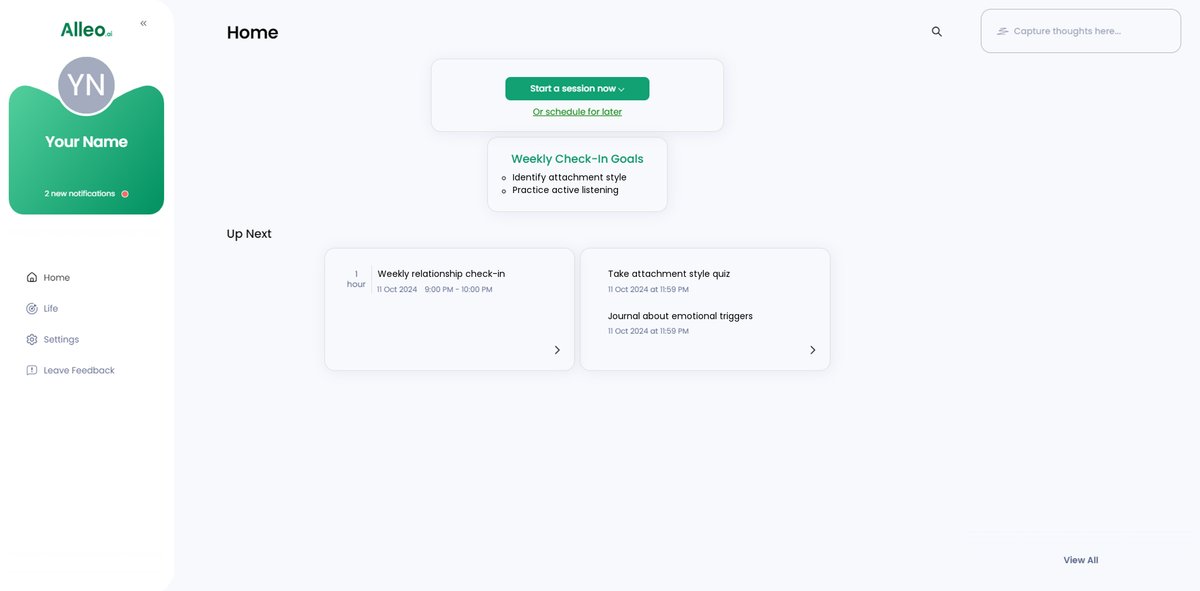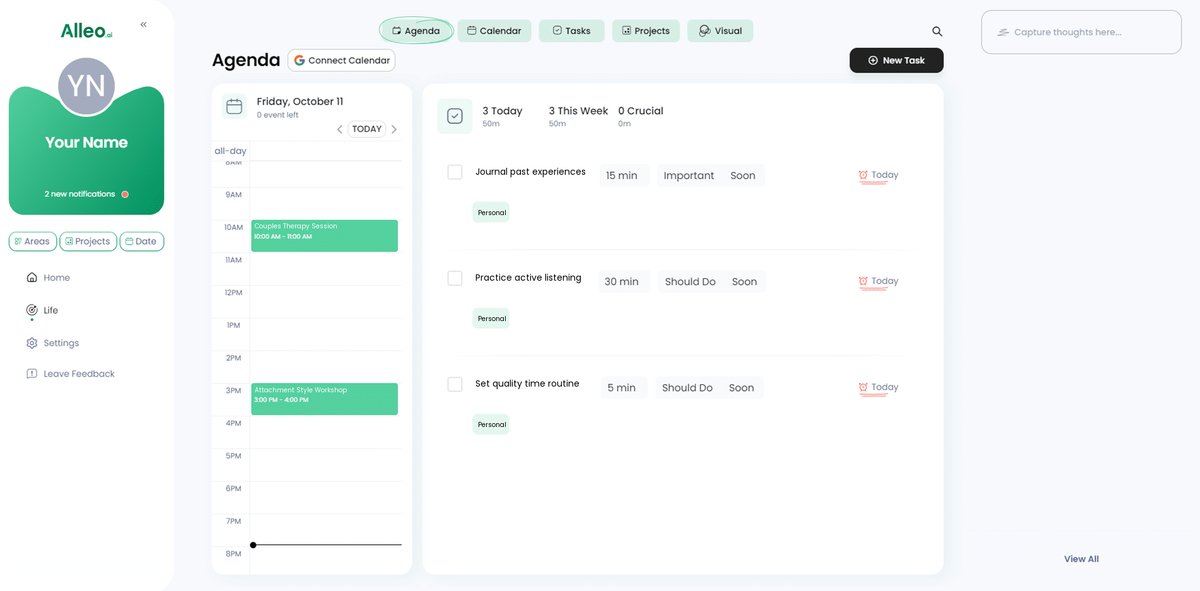7 Powerful Strategies to Build Trust with a Dismissive Avoidant Partner (As a Fearful Avoidant)
Have you ever felt torn between wanting closeness and fearing rejection in your relationship? This is a common experience when building trust with an avoidant partner.
As a life coach, I’ve helped many women navigate the complexities of attachment styles in relationships. In my experience, understanding these dynamics is crucial for building trust with a dismissive avoidant partner and overcoming fear of intimacy.
In this article, you’ll discover actionable steps to improve your relationship dynamics and emotional well-being. We’ll dive into strategies like self-awareness in attachment-based relationships, communication strategies for avoidant partners, and seeking professional help for navigating anxious-avoidant relationship dynamics.
Let’s dive in to explore how patience and consistency in attachment healing can create a secure base in fearful-avoidant relationships.

Understanding the Root of the Problem
Navigating the complexities of attachment styles in relationships can be emotionally draining. Many clients initially struggle with feeling misunderstood and isolated when building trust with avoidant partners.
This is especially true when dealing with a dismissive avoidant partner.
In my experience, people often find it challenging to balance their own needs with their partner’s avoidance. This creates a cycle of frustration and emotional pain, making it difficult to overcome the fear of intimacy.
Understanding these dynamics is the first step toward fostering a healthier relationship and building emotional connection with avoidants.
The emotional toll can be significant. It often leads to anxiety and self-doubt, especially when navigating anxious-avoidant relationship dynamics.
Recognizing and addressing these issues is crucial for personal well-being and relationship success when building trust with avoidant partners.

Your Roadmap to Building Trust
Overcoming this challenge requires a few key steps when building trust with avoidant partner. Here are the main areas to focus on to make progress in navigating anxious-avoidant relationship dynamics:
- Understand your attachment style and triggers: Identify your attachment styles in relationships and recognize your emotional triggers.
- Practice self-awareness and emotional regulation: Incorporate mindfulness practices to enhance emotional control and self-awareness in attachment-based relationships.
- Communicate openly about needs and boundaries: Regularly discuss needs and boundaries with your partner, using communication strategies for avoidant partners.
- Give space when needed, but stay consistent: Balance alone time with quality time together, demonstrating patience and consistency in attachment healing.
- Validate partner’s emotions without judgment: Show empathy and avoid unsolicited advice, creating safety for dismissive avoidant partners.
- Develop trust through small, consistent actions: Build reliability through small, meaningful actions, focusing on building emotional connection with avoidants.
- Seek couples therapy for attachment issues: Work with a therapist specializing in attachment styles for healing attachment wounds in couples.
Let’s dive in to explore these strategies for building trust with avoidant partner and overcoming fear of intimacy!
1: Understand your attachment style and triggers
Knowing your attachment style and recognizing your triggers is crucial for building trust with your dismissive avoidant partner and navigating anxious-avoidant relationship dynamics.
Actionable Steps:
- Identify your attachment style: Take a reputable attachment style quiz to understand your attachment patterns in relationships.
- Journal past experiences: Write about past relationships to identify recurring patterns and triggers, aiding in healing attachment wounds in couples.
- Reflect on current dynamics: Note how your identified triggers influence your current relationship behaviors and communication strategies for avoidant partners.
Explanation: Understanding your attachment style and triggers helps you navigate relationship challenges and overcome fear of intimacy.
Recognizing these patterns can improve communication and emotional regulation, fostering self-awareness in attachment-based relationships.
According to experts, this awareness lays the foundation for healthier interactions and personal growth when building trust with avoidant partners.
Gaining insights into your attachment style is the first step towards fostering a secure and stable relationship, creating a secure base in fearful-avoidant relationships.

2: Practice self-awareness and emotional regulation
Practicing self-awareness and emotional regulation is key to building trust with avoidant partners in your relationship.
Actionable Steps:
- Incorporate mindfulness practices: Start with daily meditation or deep breathing exercises to enhance emotional control and overcome fear of intimacy.
- Attend a workshop: Enroll in an emotional intelligence workshop to improve your self-awareness in attachment-based relationships and understanding of emotions.
- Use an emotional wheel: Utilize an emotional wheel to accurately identify and articulate your feelings during conflicts, enhancing communication strategies for avoidant partners.
Explanation: These steps are essential for understanding and managing your emotions effectively when building trust with avoidant partners.
By practicing mindfulness and emotional intelligence, you can better navigate stressful situations and create a secure base in fearful-avoidant relationships.
According to attachment theory, emotional regulation helps create a stable foundation for healthier relationships and aids in healing attachment wounds in couples.
Taking these actions will help you build a stronger emotional connection and improve communication with your partner, especially when navigating anxious-avoidant relationship dynamics.

3: Communicate openly about needs and boundaries
Effective communication about needs and boundaries is vital for building trust with a dismissive avoidant partner and fostering a secure base in fearful-avoidant relationships.
Actionable Steps:
- Schedule regular check-ins: Set a specific time each week to discuss your needs and boundaries with your partner, which is crucial for building trust with avoidant partners.
- Use “I” statements: Express your feelings using “I” statements to avoid blaming and to maintain a neutral tone, a key communication strategy for avoidant partners.
- Create a safe space: Establish a judgment-free zone where both partners can share their thoughts and feelings without interruption, essential for creating safety for dismissive avoidant partners.
Explanation: These steps are essential for creating a transparent and supportive environment in your relationship. Regular check-ins ensure both partners feel heard and understood, which is crucial when building trust with avoidant partners.
According to experts, using “I” statements can reduce defensiveness and promote constructive dialogue. Establishing a safe space encourages open communication and emotional connection, helping in overcoming fear of intimacy.
Communicating openly about needs and boundaries helps build a foundation of trust and mutual respect in your relationship, particularly when navigating anxious-avoidant relationship dynamics.

4: Give space when needed, but stay consistent
Maintaining a balance between giving space and staying consistent is vital for building trust with a dismissive avoidant partner and fostering a secure base in fearful-avoidant relationships.
Actionable Steps:
- Agree on specific times for alone time: Decide together on when each partner can have personal time to recharge, which is crucial for navigating anxious-avoidant relationship dynamics.
- Set a routine for quality time: Establish a regular schedule for spending meaningful time together to maintain the connection and build emotional connection with avoidants.
- Use a shared calendar: Plan and respect each other’s personal space and commitments using a shared calendar, demonstrating patience and consistency in attachment healing.
Explanation: Giving space while staying consistent helps avoidant partners feel secure and respected. It ensures that both partners’ needs are met without overwhelming each other, which is essential in building trust with avoidant partners.
According to experts, balancing alone time with regular, quality interactions can enhance emotional intimacy and trust. This approach fosters a healthier relationship dynamic and aids in overcoming fear of intimacy.
Balancing space and consistency is key to building a stronger, more trusting relationship and healing attachment wounds in couples.

5: Validate partner’s emotions without judgment
Validating your partner’s emotions without judgment is crucial for building trust with avoidant partners and fostering a healthy relationship, especially when navigating anxious-avoidant relationship dynamics.
Actionable Steps:
- Practice active listening: Focus on your partner’s words without interrupting. Show empathy by nodding and maintaining eye contact, which is essential in building emotional connection with avoidants.
- Acknowledge their feelings: Use phrases like “I understand how you feel” to show that you recognize their emotions, helping in overcoming fear of intimacy.
- Avoid unsolicited advice: Instead of offering solutions, simply offer support and let them know you are there for them, which is key in creating safety for dismissive avoidant partners.
Consider these key aspects of emotional validation in attachment-based relationships:
- Empathy: Put yourself in your partner’s shoes, essential for healing attachment wounds in couples
- Non-verbal cues: Use body language to show you’re listening, crucial for communication strategies with avoidant partners
- Reflective responses: Paraphrase their feelings to ensure understanding, promoting self-awareness in attachment-based relationships
Explanation: These steps matter because they help your partner feel heard and understood, which strengthens your emotional bond and acts as a secure base in fearful-avoidant relationships.
According to experts, validating emotions without judgment reduces defensiveness and promotes a supportive environment. This approach aligns with current trends in relationship coaching, emphasizing empathy and understanding of attachment styles in relationships.
Taking these steps will help you build a more trusting and emotionally supportive relationship, demonstrating patience and consistency in attachment healing.

6: Develop trust through small, consistent actions
Building trust with avoidant partners through small, consistent actions is essential for fostering a secure and stable relationship with your dismissive avoidant partner.
Actionable Steps:
- Follow through on promises: Ensure you keep commitments to build reliability and trust, crucial for healing attachment wounds in couples.
- Share personal stories: Gradually open up by sharing small, personal anecdotes to increase intimacy and overcome fear of intimacy.
- Celebrate small milestones: Recognize and celebrate achievements together to reinforce positive behaviors and connection, essential for building emotional connection with avoidants.
Explanation: These steps matter because they help establish a pattern of reliability and intimacy. Consistent actions build a foundation of trust and show your partner that they can rely on you, which is crucial when navigating anxious-avoidant relationship dynamics.
According to experts, small, meaningful actions can gradually break down barriers and foster a deeper emotional connection, creating safety for dismissive avoidant partners.
Here are some ways to build trust with avoidant partners through daily actions:
- Be punctual for dates and appointments, demonstrating patience and consistency in attachment healing
- Send thoughtful messages or small gestures of affection to nurture a secure base in fearful-avoidant relationships
- Follow up on conversations to show you were listening, enhancing communication strategies for avoidant partners
Taking these steps will help you build a stronger, more trusting relationship, promoting self-awareness in attachment-based relationships.

7: Seek couples therapy for attachment issues
Seeking couples therapy for attachment issues is crucial for building trust with avoidant partners and fostering a healthier relationship. It’s an essential step in healing attachment wounds in couples.
Actionable Steps:
- Research and choose a therapist: Find a therapist specializing in attachment styles in relationships and relationship dynamics.
- Attend therapy sessions regularly: Commit to regular sessions to ensure consistent progress and address ongoing issues, demonstrating patience and consistency in attachment healing.
- Discuss progress openly: Share your thoughts and feelings about the therapy process with your partner to stay aligned and improve communication strategies for avoidant partners.
Benefits of couples therapy include:
- Improved communication skills for navigating anxious-avoidant relationship dynamics
- Enhanced emotional intimacy and overcoming fear of intimacy
- Tools for conflict resolution and building emotional connection with avoidants
Explanation: These steps matter because professional guidance can provide tailored strategies and insights to improve your relationship and create a secure base in fearful-avoidant relationships.
According to experts, consistent therapy sessions help address underlying issues and promote lasting change, crucial for creating safety for dismissive avoidant partners.
Engaging in therapy together demonstrates a commitment to growth, healing, and self-awareness in attachment-based relationships.
Taking these steps will help you build a stronger, more trusting relationship with your avoidant partner.

Transform Your Relationship with Alleo’s Support
We’ve explored the complexities of building trust with a dismissive avoidant partner. Did you know you can work directly with Alleo to make this journey easier and faster? Our approach focuses on navigating anxious-avoidant relationship dynamics and creating safety for dismissive avoidant partners.
Set up an account and create a personalized plan. Alleo’s AI coach offers tailored support for your specific challenges, including communication strategies for avoidant partners and overcoming fear of intimacy.
The coach follows up on progress and handles changes while keeping you accountable via text and push notifications, fostering patience and consistency in attachment healing.
Ready to get started for free? Let me show you how to begin building trust with your avoidant partner and healing attachment wounds in couples!
Step 1: Log In or Create Your Account
To start your journey towards building trust with your dismissive avoidant partner, Log in to your account or create a new one to access Alleo’s personalized AI coaching support.

Step 2: Choose Your Goal – Improving Overall Well-being and Life Satisfaction
Click on “Improving overall well-being and life satisfaction” to address the root causes of relationship challenges and enhance your emotional resilience, which is crucial for building trust with a dismissive avoidant partner.

Step 3: Select “Personal” as Your Focus Area
Choose “Personal” as your life area to address attachment and trust issues in your relationship. This focus allows you to work on self-awareness, emotional regulation, and communication skills, which are crucial for building a stronger connection with your dismissive avoidant partner.

Step 4: Starting a coaching session
To begin your journey with Alleo’s AI coach, start with an intake session to set up your personalized plan for building trust with your dismissive avoidant partner and improving your relationship dynamics.

Step 5: Viewing and Managing Goals After the Session
After your coaching session, open the Alleo app and check your home page to view and manage the personalized relationship goals you discussed, allowing you to track your progress and stay accountable in building trust with your dismissive avoidant partner.

Step 6: Adding events to your calendar or app
Use the app’s calendar and task features to schedule and track your progress on building trust with your dismissive avoidant partner, such as setting reminders for quality time together or check-ins about emotional needs.

Bringing It All Together for a Healthier Relationship
As we wrap up, remember that building trust with your dismissive avoidant partner is a journey. It requires patience, understanding, and consistent effort in attachment healing.
By understanding your attachment styles in relationships and practicing self-awareness, you can better navigate anxious-avoidant relationship dynamics. Open communication and validating each other’s emotions play crucial roles in fostering trust and creating safety for dismissive avoidant partners.
Don’t forget to seek professional help if needed. Couples therapy can provide valuable insights and strategies tailored to your needs, particularly for overcoming fear of intimacy and healing attachment wounds in couples.
Finally, consider using Alleo to support your journey in building trust with avoidant partner. It’s here to help you set and track your relationship goals, ensuring you stay on the right path towards building emotional connection with avoidants.
You’ve got this. Take the first step today in creating a secure base in fearful-avoidant relationships.